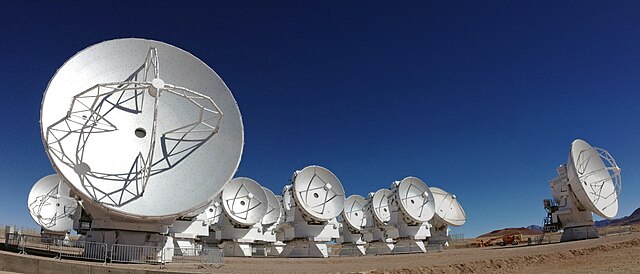Extremely high frequency is the International Telecommunication Union designation for the band of radio frequencies in the electromagnetic spectrum from 30 to 300 gigahertz (GHz). It lies between the super high frequency band and the far infrared band, the lower part of which is the terahertz band. Radio waves in this band have wavelengths from ten to one millimeter, so it is also called the millimeter band and radiation in this band is called millimeter waves, sometimes abbreviated MMW or mmWave. Millimeter-length electromagnetic waves were first investigated by Jagadish Chandra Bose, who generated waves of frequency up to 60 GHz during experiments in 1894–1896.
Part of the Atacama Large Millimeter Array (ALMA), Chile, America, a millimeter wave radio telescope
A CableFree MMW link installed in the UAE installed for Safe City applications, providing 1 Gbit/s capacity between sites. The links are fast to deploy and have a lower cost than fibre optics.
Millimeter wave fire control radar for CIWS gun on Soviet aircraft carrier Minsk, Russia
The electromagnetic spectrum is the full range of electromagnetic radiation, organized by frequency or wavelength. The spectrum is divided into separate bands, with different names for the electromagnetic waves within each band. From low to high frequency these are: radio waves, microwaves, infrared, visible light, ultraviolet, X-rays, and gamma rays. The electromagnetic waves in each of these bands have different characteristics, such as how they are produced, how they interact with matter, and their practical applications.
A visualization of the electromagnetic spectrum.




